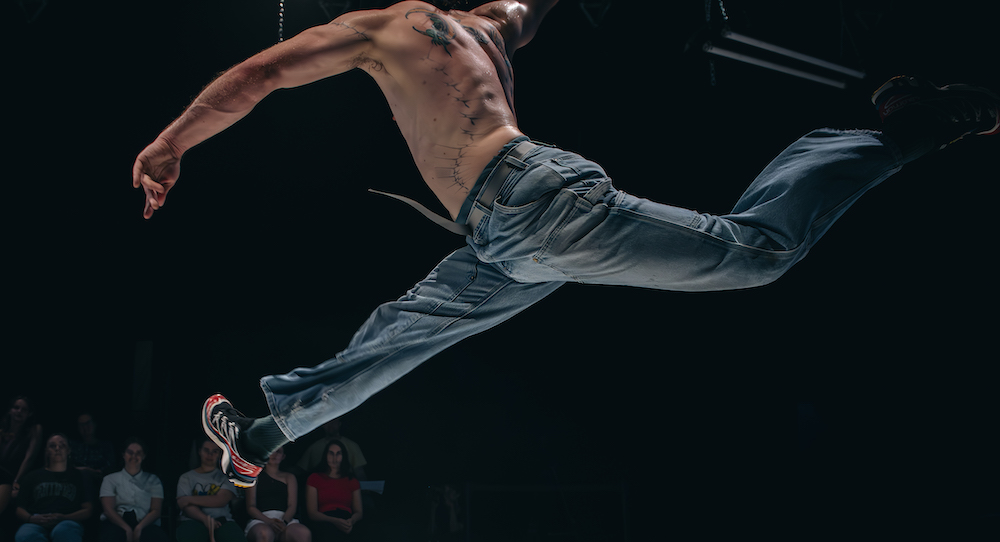Arts House, Melbourne.
20 February 2024.
Question. What makes a cuddle a cuddle, as opposed to something more amorous? Answer. Context.
As dance fans, we are used to seeing the same moves. The way the human body articulates (whether in sport, art or combat) tends to evince an underlying lexicon of motion and balance. Knowing this, it is no surprise to see Cuddle utilise an immediately recognisable palette. The surprises, the originality, emerge not from the physical but from the way in which a series of oft repeated moves are contextualised.
Created by and starring Harrison Ritchie-Jones and Michaela Tancheff, Cuddle is a playful fusion of forms, blending contemporary dance, martial arts and hip hop with a few snatches of clowning and Commedia dell’arte. The result is an acrobatic melange. More movement theatre than pure dance, it marries technical rigour to a comic irreverence and, in the process, creates a fourth wall shattering work that both usurps and upholds our expectations.
This precisely calibrated balance starts on video, as we begin the evening watching the dancers enter the venue in character. From there, they move to the arena, which resembles a Graeco-Roman or Sumo wrestling ring, where they initiate a sequence of moves that veer between ‘fighting’ and working together. Sometimes it looks like circus, at others ’80s WrestleMania, and elsewhere like classical ballet. The decision to wear balaclavas throughout adds an edge of deviance and provocation, making Cuddle seem more like a Bonny & Clyde couple heist than a lovers’ duet.
Both Tancheff and Ritchie-Jones execute with enviable exactness. Cuddle is a physically taxing work. As such, there are moments of pure spectacle. This is dance with an extra shot of endurance and risk.
Yet, for all the virtuosic tricks and attempts at mould-breaking, what Cuddle does best is take a common language and transplant it. The shift may only be slight – one step removed – but it is enough. When is a cuddle a wrestle hold? When is it a prelude to sex?
There is a deep sense in which dance is entirely rooted in form. Even if we cannot name it, we recognise it. What Ritchie-Jones and Tancheff offer us is the chance to notice that form by nudging it out of its usual context. Only when we change the mask do we recognise the face.
That such a subtle manoeuvre is hidden beneath layers of athleticism and theatricality makes the piece all the more interesting.
Cuddle is a work that speaks at great volume, yet perhaps intends us to discern the whisper.
By Paul Ransom of Dance Informa.















